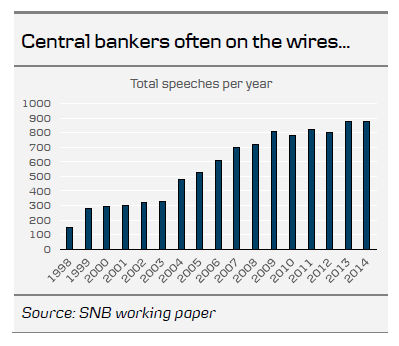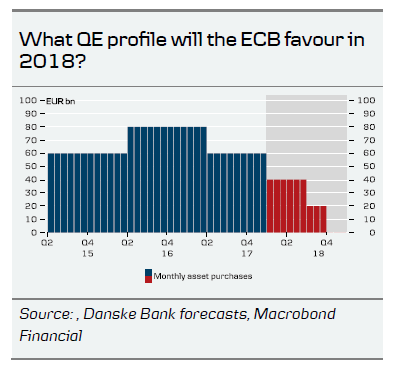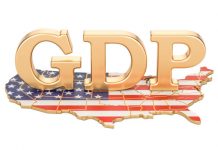Key points
- Global central bankers are busy on the news wires but new research indicates that the accuracy of forecasting financial and macroeconomic variables has not improved.
- Market to focus on what ‘QE path’ the ECB will choose on 26 October, when it is due to reveal the bulk of its decisions regarding the future of the QE programme.
- It seems that two ‘paths’ are on the table. Either an extension for six months with EUR40bn a month in purchases or purchases for nine/12 months but only EUR20bn or EUR30bn a month.
- We believe for now in the first ‘path’ but acknowledge that the purchase constraints that make it more and more difficult for the ECB to buy according to the ‘Capital Key’ makes a ‘longer, but smaller’ monthly amount ‘path’ more likely.
The art of Kremlinology
This week has been full of speeches from global central banks. According to Bloomberg alone, 14 speeches from the ECB and 17 speeches from Fed members were scheduled. On top of this we had FOMC minutes. The reasons are that the important 26 October ECB meeting, where the board has promised to outline the future for the ECB QE programme, is drawing closer; the Fed is widely discussing balance sheet reduction and low inflation versus a low unemployment rate and, not least, that we have the annual IMF meeting in Washington this week.
However, there is still plenty of information for central bank watchers to scrutinise. Central bank watching is sometimes referred to as the new art of ‘Kremlinology’, a term applied to Western analysts during the cold war who were trying to figure out what was really going on behind closed doors at the Kremlin. Even small changes in wording, the removal of certain people from the public and the way articles were arranged in Pravda were scrutinised. The question is whether these signals were intentional and indeed they were probably often misinterpreted by analysts.
Forecasting capabilities have not improved
The uncertainty is how much value we can actually derive from central bank watching. It has been best practice among central banks for years to provide information about monetary policy in order to increase its effectiveness.
However, what about the art of forecasting financial and macroeconomic variables? In a working paper from the Swiss National Bank (SNB), the authors Thomas Lustenberger and Enzo Rossi argue, based on a large sample of data, that increased central bank communication does not improve the accuracy of private forecasts. Furthermore, they argue that more frequent communication increases both forecast errors and their dispersion. So, perhaps ‘speech is silver, silence is golden’ when it comes to forecasting on the back of central bank speeches.



But we still keep an eye on ECB and Fed speeches
With these academic findings in mind, we should probably end this document here. However, we stick to our Kremlinology business and give our interpretation of the latest communication from the ECB and the Fed.
If we start with the ECB, it seems that at the forefront of the discussion is not so much whether the QE programme should be extended into 2018 but rather what the ECB thinks is the most appropriate way to move forward when the Governing Council makes the bulk of its decisions regarding the future of the QE programme at its 26 October meeting. In the minutes from the 6-7 September ECB meeting, the ECB said ‘within the framework of the Governing Council’s forward guidance, the benefits from a longer intended purchase horizon, combined with a greater reduction in the pace, were compared with those from a shorter period of purchases and larger monthly volumes’.
It appears there are two options now on the table: either an extension for six months, with EUR40bn a month in purchases or purchases for nine/12 months but at only EUR20bn or EUR30bn a month. It is also noteworthy that the ECB minutes state that ‘the monetary policy stance would remain highly accommodative in either scenario on account of the range of policy instruments in place, most notably the reinvestment of the principal of maturing securities, the liquidity related to the targeted longer term refinancing operations, and the forward guidance on the ECB’s key policy rates’.
In particular, the discussion regarding the reinvestment flows, which could be as high as EUR15-20bn a month in 2018, is attracting increasingly more attention. It is likely the reinvestment flows will be an important part of the exit discussion that the ECB will, in our view, try to sell as a very ‘soft exit’.
We plan to publish an in-depth ECB preview ahead of the 26 October meeting but for now we stick with the view that the ECB will announce a six-month extension with a monthly pace of EUR40bn. We expect a ‘small’ three-month EUR20bn extension after that. That said, the purchase constraints that make it more and more difficult for the ECB to buy according to the ‘Capital Key’ in the low-debt countries make a ‘more months but smaller monthly amount path’ more likely.
Fed: on track for a December hike
In respect to the Fed, it also released minutes this week. Here, we already know the different positions among the FOMC members. The most dovish FOMC members (Lael Brainard, Charles L. Evans and Neel Kashkari) argued that the Fed should not hike further this year, as low inflation may not be just transitory due to low inflation expectations and labour market slack. The core FOMC members on the other hand think it is appropriate to tighten monetary policy further, as above-trend growth tightens the labour market further, which eventually leads to higher wage growth and hence higher inflation; in other words, they still have a strong belief in the Phillips curve. In our view, they are likely to feel relieved about the latest average hourly earnings figures, which came out much higher than expected in September.
All in all, it remains our base case that the Fed will hike in December, as the core voting FOMC members put more weight on labour market data than current inflation data, although we agree with the dovish camp that low inflation may not be temporary due to low inflation expectations. For more, see FOMC minutes: Core members still want to hike in December, 11 October.













